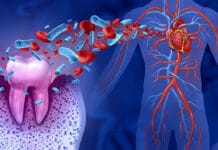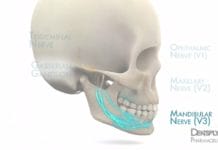Though the DSM-5 does not recognize internet addiction as a literal disease, we all know that it is a literal issue in many of our homes. Young children, teenagers, and adults of any age can all become addicted to online gaming and social media, for example, and this leads to neglect in other areas of their lives, including their dental hygiene. But, how does a person’s dental hygiene suffer when the person also shows signs of true internet addiction?
Internet Addiction, Oral Health Practices, Clinical Outcomes, and Self-Perceived Oral Health in Young Saudi Adults is a study covering this very subject in the young adult population of Saudi Arabia, most of whom have access to the latest and greatest of world technologies. For our purposes, internet addiction is defined as excessive use of the internet in ways that are nonessential to a person’s work or home life, and that may cause additional stress or negative life consequences that can be detrimental to the addicted person and those around them.
Negative Outcomes of Internet Addiction
There is a pretty long list of negative behaviors associated with internet addiction that are directly related to a decrease, or barrier, in dental hygiene practices.
- Smoking cigarettes, drinking alcohol, and other drug usage are more prevalent in those who suffer from internet addiction
- Daily life is continuously disrupted, and routines falter
- Addiction affects the person psychologically and physically, besides putting them in financial, occupational, social, or legal distress
- Individuals with the addiction skip meals, binge eat, gain weight, and refuse medical care more and more as they go through the addiction process
- Falling asleep, and staying asleep, are disrupted
Aside from the above list, many people who claim to suffer from internet addiction have a higher tendency to grind their teeth, both during the day and at night. They brush their teeth much less if they remember to do it at all. When the persons do brush their teeth, they are much less likely to floss or use mouthwash in addition, causing an increase in infection and decay.
Many times, internet addiction is a solitary activity, and the person involved has no one to tell them if they have halitosis or if their teeth and gums look unhealthy. Young adults shouldn’t need reminding to complete their dental hygiene routines, but those addicted to the internet seem to need it.
Discovery
Researchers created a questionnaire for young adults based on their internet usage and perceived dental hygiene status. The findings were not that surprising, considering the physical and psychological effects that internet addiction had on the people involved. The more a person uses the internet, the worse their diet and hygiene routine.
Surprisingly, the perception that the young adults had of their own dental health did affect results. Those who used the internet all the time but rated their dental hygiene as fine, or average, did score lower in gingivitis levels. This finding directly supports the theory that a person’s mental health does affect dental hygiene and internet usage.
It was discovered, unfortunately, those intense internet users had a much higher percentage of cigarette smokers than in the average population. The deeper a person gets in their internet addiction, the less they were motivated to complete all self-care activities, like dental hygiene. Stress, fatigue, and reduced motivation are detrimental to health in general, as well as with dental issues.
Researchers in this study have concluded that the deeper a person gets into their addiction, the worse their dental hygiene becomes. This leads to a much higher risk of related diseases and irreversible dental damage. The researchers suggest asking your patients how much time they spent on their various devices and further encourage and educate about hygiene maintenance based upon their answers.











